Tag archives: geophysics
Seeking causes of Mexico City’s earthquake
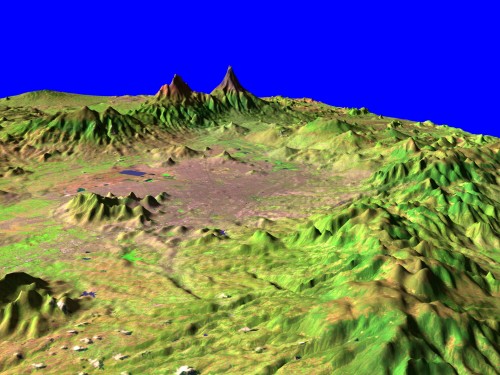
Mexico City: built on a basin of sedimentary rock from eroded mountains. (Courtesy: NASA/Goddard Space Flight Center Scientific Visualization Studio)
By James Dacey
At the time of writing, the official death toll stands at more than 200 people following the magnitude 7.1 earthquake that struck near Mexico City on Tuesday. According to the secretary of education, 200 schools have been affected, including the Enrique Rébsamen elementary school in Mexico City’s southern Coapa district where 37 people died, as reported by the BBC. Meanwhile buildings have collapsed at a campus of the Monterrey Institute of Technology killing five people and injuring 40, also in the south of the city.
In a cruel twist of fate, the quake struck on the day of the 32nd anniversary of the 1985 Mexico City earthquake that led to the death of up to 10 000 people. Even though yesterday’s event is likely to claim fewer victims than the 1985 disaster, it is still a shocking reminder of how vulnerable Mexico City is to earthquake damage.
View all posts by this author | View this author's profile
Our hazardous planet: when the world is out to get you
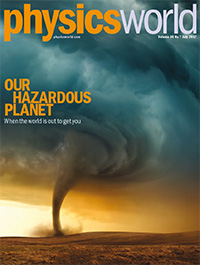 By Matin Durrani
By Matin Durrani
For people afflicted by last month’s devastating fire at Grenfell Tower in London or for those caught up in recent terrorist atrocities, it can seem that many problems in this world are entirely of our own making.
Yes the modern world has benefited from our collective wisdom and creativity – especially through science and engineering – but often it feels as if irrational human behaviour lies at the root of many of our troubles.
Nevertheless, we should remember that our planet itself holds many natural hazards too, as the latest special issue of Physics World reminds us.
Remember that if you’re a member of the Institute of Physics, you can read Physics World magazine every month via our digital apps for iOS, Android and Web browsers.
View all posts by this author | View this author's profile
Horsing around with some innovative physics
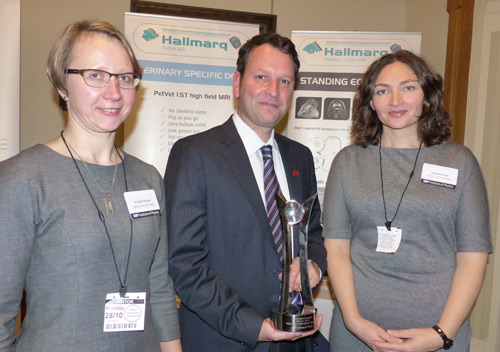
(Left to right) Physicists Giedre Podolyak, Steve Roberts and Snezhana Chater of Hallmarq Veterinary Imaging celebrate their success in the IOP Innovation Awards.
By Margaret Harris
Imagine you’re a veterinarian and a trainer asks you to take a look at a horse. The animal, a champion showjumper, is limping slightly but there is no obvious injury. Exploratory surgery would probably do more harm than good, and the alternative – magnetic resonance imaging (MRI) – isn’t risk-free either. You’d need to put the horse under a general anaesthetic, and you know horses don’t react well to that; in fact, around 0.5% suffer serious injuries while coming round afterwards. And that’s assuming you can even find a scanner big enough to fit a horse. What do you do?
This might sound like a fairly niche dilemma, but for Hallmarq Veterinary Imaging it has become the basis for a thriving business – a business, moreover, that has just won an IOP Innovation Award for the successful application of physics in a commercial product.
At the awards ceremony – which took place last night in the Palace of Westminster, London, just down the hall from the House of Commons chamber – I caught up with Hallmarq’s operations and technical director, Steve Roberts. After sketching out the scenario of the veterinarian and the injured horse, Roberts, a physicist, explained that Hallmarq’s MRI scanner fits around the horse’s leg. This means that equine patients can simply be led into it, sedated but conscious. Sophisticated error-correction and image-processing software helps the scanner compensate for the horse’s movement, and in 15 years of operation, Roberts estimates that veterinarians have used Hallmarq’s machines to scan more than 60,000 horses.
The October 2015 issue of Physics World is out now
By Matin Durrani
It’s amazing the lengths physicists will go to get things done – from building telescopes on the tops of mountains to lowering neutrino detectors to the bottom of the sea and from firing satellites into space to colliding particles in tunnels. We’ve covered all those efforts in
Physics World many times, but there’s one extreme activity that’s been off our radar – until now.
That is the new but little-known field of “speleophysics” – or “the physics of caves” – which we tackle in the cover feature of the October 2015 issue of Physics World magazine. For the small band of researchers who brave the journey underground, being a speleophysicist is almost the perfect job. Armed with helmets, ropes, torches and boots, they’re able to combine their love of physics with a fascination for the nether world – and experience the thrill (and danger) of caving, too.
Physics World special report on Mexico is out now
By James Dacey
Today is Mexico’s Independence Day, marking the Grito de Dolores – the day in 1810 when the Roman Catholic priest Miguel Hidalgo called on his congregation in the small Mexican town of Dolores to revolt against the Spanish colonial government. This “Cry of Dolores” is seen as the flash point that triggered the Mexican War of Independence.
Modern-day Mexico is still a place with its fair share of turmoil, as the government faces increasing pressure over its inability to deal with drugs, violence and corruption. One area that is starting to look more positive, however, is Mexico’s science base – the administration of president Enrique Peña Nieto has vowed to double Mexico’s investment in science and technology to 1% of GDP and has already sanctioned increases in 2013 and 2014.
To shine a light on what the Mexican physics community is up to, this month sees the publication of a new free-to-read Physics World special report on physics in Mexico. We believe that physicists in Mexico are doing engaging work that deserves to be more widely known. In choosing our coverage for the report, we have not only focused on the challenges for the Mexican community, but also hope to give you a flavour of the rich culture and geography of this most colourful of countries.
Sandpit physics
By James Dacey
When you think of cutting-edge experimental physics, you might picture the grandiose detectors of the Large Hadron Collider (LHC), or perhaps a lab-coat-wearing scientist hunched over a shiny new microscope. Sometimes, however, all you need is a bucket of sand, a balloon and a pin.
View all posts by this author | View this author's profile
Creating craters, Mexican style
By Matin Durrani in Puebla, Mexico
So it’s day five of the Physics World Mexican adventure and today we’ve been to the Benemérita Universidad Autónoma de Puebla (BUAP), which is one of the oldest universities in the country. After taking a peek at a new facility containing one of the most advanced supercomputers in Latin America, we headed over to the Institute of Physics, where we bumped into Felipe Pachecho Vázquez.
View all posts by this author | View this author's profile
A visit to an island called Nuuk
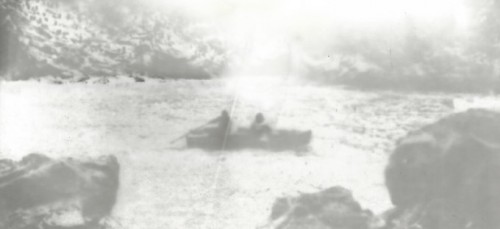
Anaïs Tondeur in collaboration with Jean-Marc Chomaz, Paul Syrillin, 2014, shadowgram, 11 × 24 cm. Image courtesy of the artist and GV Art gallery.
By Margaret Harris
The story of Nuuk began in the early 18th century when a French naval officer landed on a barren, ice-covered island and noted its coordinates in his logbook. The island, he reported, was volcanic in nature, but little else was known about it; indeed, later visitors to its supposed location found no sign of land. Rediscovered in the 20th century, Nuuk was soon visited by a series of scientific expeditions, one of which noted that the island’s surface area was shrinking. An observation station was set up on a prominent headland, but in 2012, it abruptly ceased transmitting; satellite images later revealed that Nuuk had vanished entirely beneath the ocean surface. Coincidentally, the final signal from Nuuk arrived just as the 34th International Geological Congress was meeting in Australia to discuss the emergence of a new, human-influenced geological age: the Anthropocene.
Nuuk and the various forces that contributed to its demise are the subject of a fascinating exhibition currently on show (until 29 November) at the GV Art gallery in London. Lost in Fathoms is a collaboration between an artist, Anaïs Tondeur, and a physicist, Jean-Marc Chomaz, who specializes in fluid dynamics. To develop her ideas about Nuuk, Tondeur spent a year in residence at Chomaz’s Laboratoire d’Hydrodynamique at the Ecole Polytechnique in France, while other parts of the exhibition grew out of a summer school in Cambridge, UK, that focused on fluid dynamics, sustainability and the environment.
Why we’re five years overdue for a damaging solar super-storm
By Matin Durrani
The cover feature of the August issue of Physics World, which is now out in print and digital formats, looks at the Sun – and in particular, at the consequences here on Earth of a “solar super-storm”. As I point out in the video above, these violent events can disturb the Earth’s magnetic field – potentially inducing damaging electrical currents in power lines, knocking out satellites and disrupting telecommunications.
One particularly strong solar super-storm occured back in 1859 in what is known as the “Carrington event”, so named after the English astronomer who spotted a solar flare that accompanied it. The world in the mid-19th century was technologically a relatively unsophisticated place and the consequences were pretty benign. But should a storm of similiar strength occur today, the impact could be devastating to our way of life.
Seismic study digs into volcanic plumbing
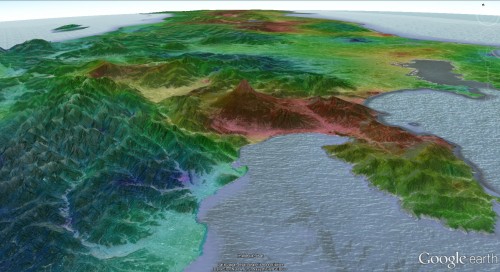
What lies beneath?: Mapping Mount Fuji. (Courtesy: Florent Brenguier)
By Tushna Commissariat
Plumbing problems do not get any bigger and more complicated than a backed-up volcano. But geophysicists looking at the responses of ground waves below Japanese volcanoes have now come up with a technique for identifying where pressurized volcanic fluids build up, allowing them to better anticipate when a volcano may erupt. Scientists already knew that seismic waves from large earthquakes agitate volcanic systems and that large eruptions generally follow a build-up of pressurized fluids at some depth. But they had been unable to pin down the specific physical changes that seismic waves cause. Now though, Florent Brenguier of the Institut des Sciences de la Terre in Grenoble, France, and colleagues at the University of Tokyo have used recordings of seismic-wave velocity from the devastating 2011 Tōhoku earthquake to create a map of seismic-velocity changes in its aftermath. Surprisingly, the largest changes were not observed in the area closest to the earthquake epicentre near the Pacific coast but farther inland, immediately below volcanic regions. The image above highlights an anomalously low seismic velocity below the Mount Fuji volcano after the earthquake, despite it being some 500 km from the epicentre. The drop in velocity is because the regions are susceptible to earthquake shaking – cracks in the crust open so that fluids at high pressures can escape, and could be seen as proxies for the high-pressure fluid build-up (Science 345 80).
View all posts by this author | View this author's profile